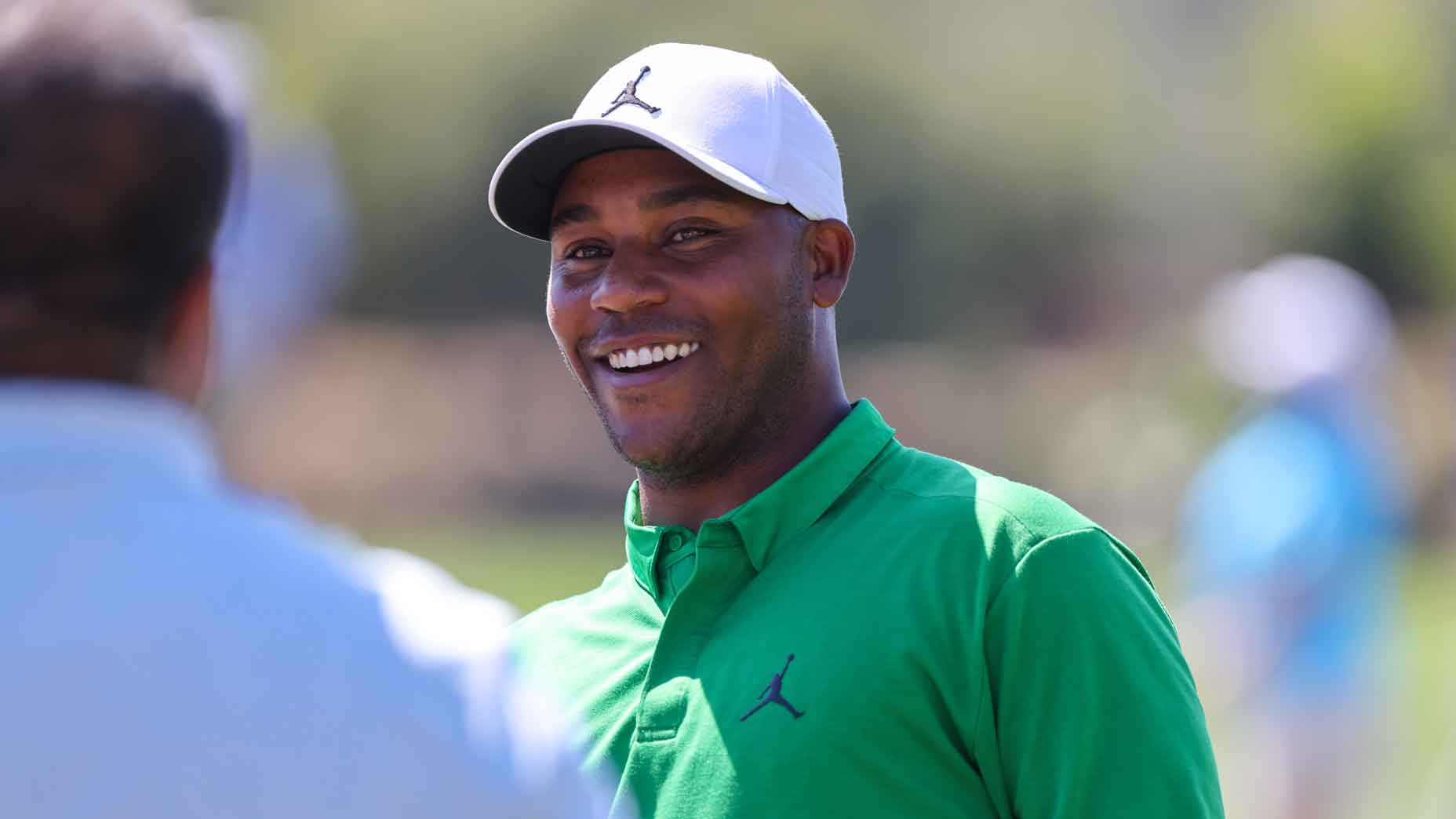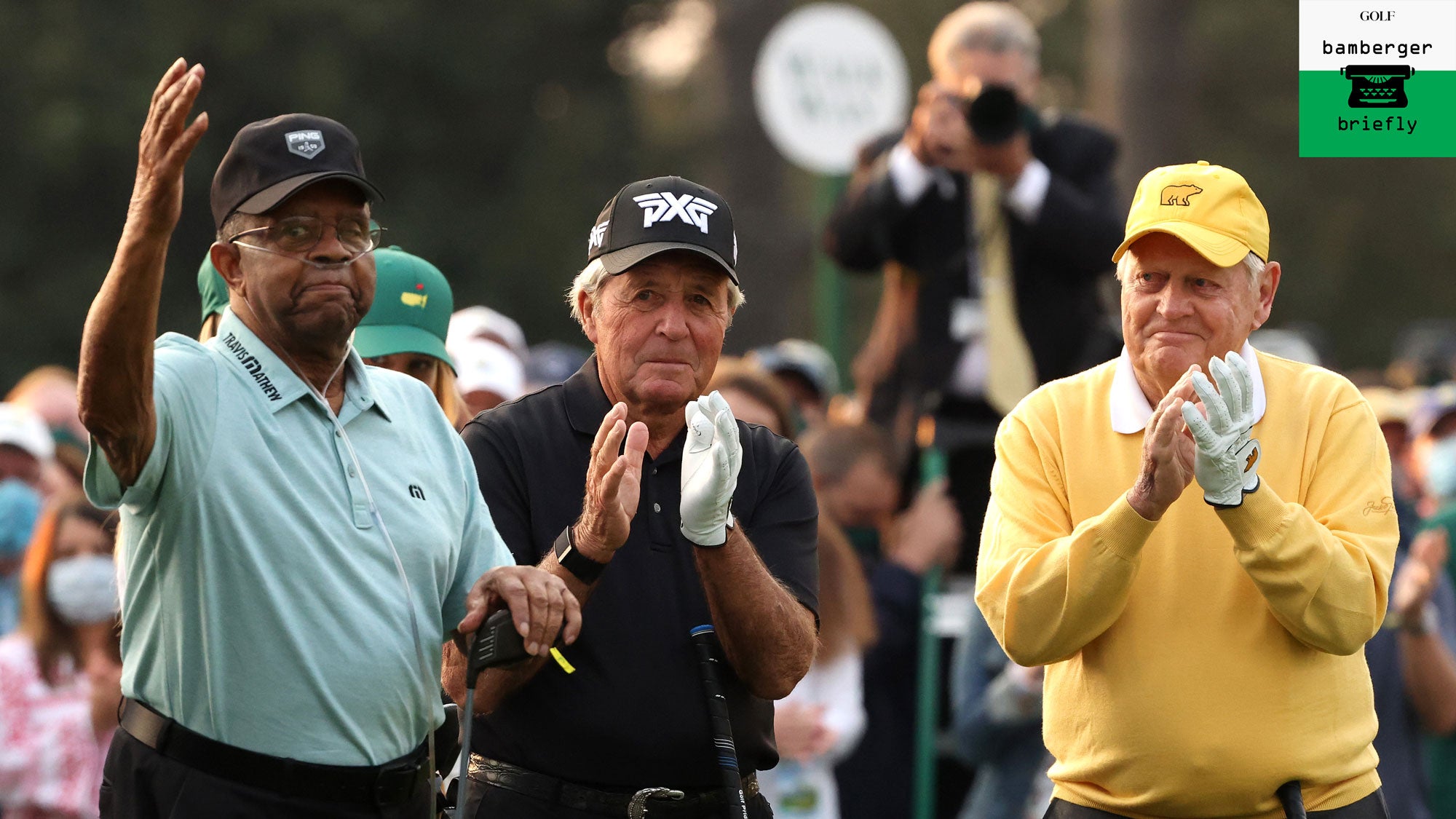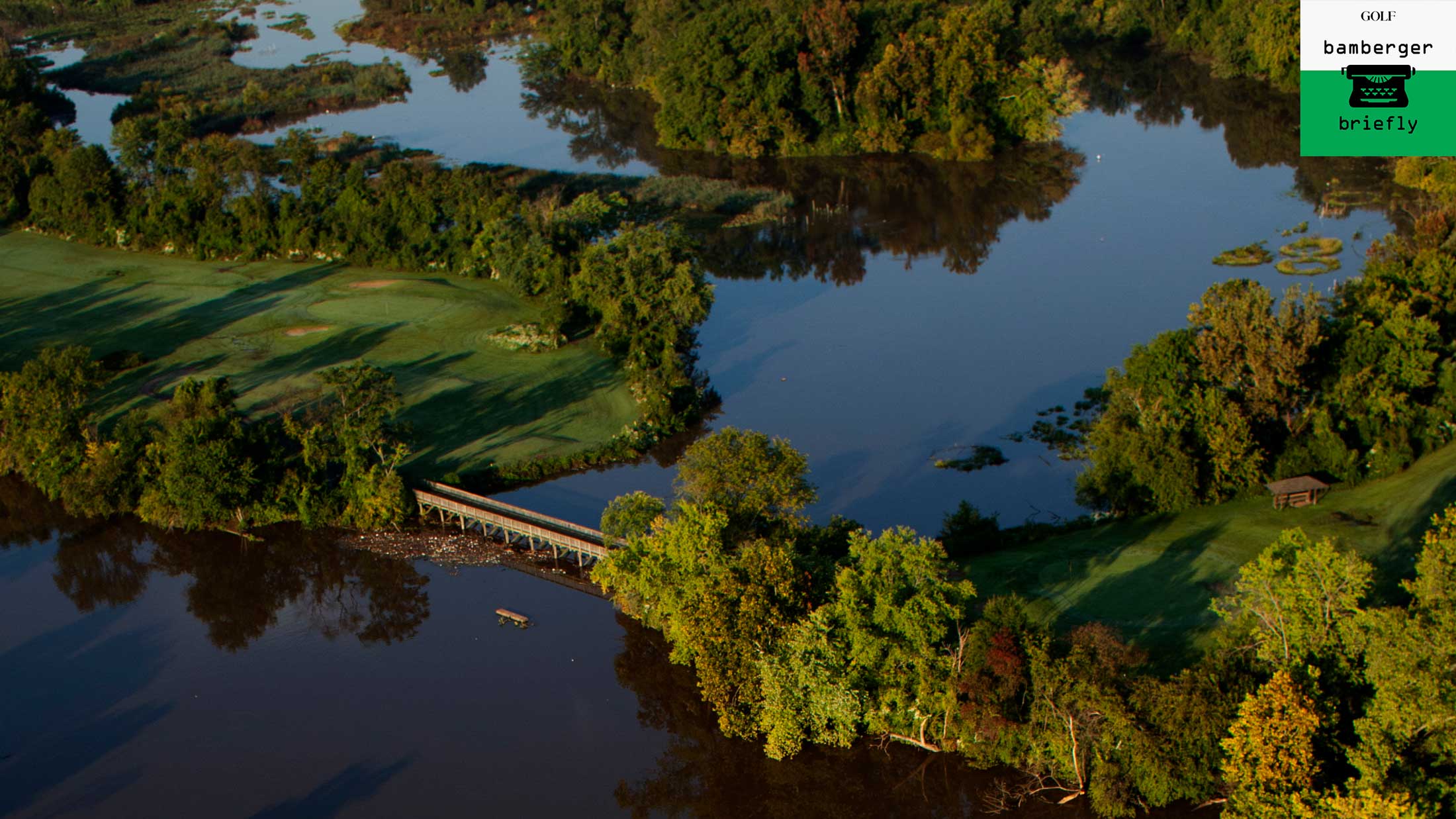Former QB Doug Williams on his experience as a Black golfer in America


Former Super Bowl-winning quarterback Doug Williams is now an executive with the Washington Football Team.
getty images
Well, maybe this will be HV3’s year, the year Harold Varner gets his first PGA Tour win and the January trip to Maui that comes with it, for the Sentry Tournament of Champions. It’s a good week: a wide-open golf course, poolside Mai Tais after work, a Ritz-Carlton where the doorman greets you with a hearty aloha. Last year, Varner finished second at Hilton Head.
In a new book by my press-tent pal John Feinstein, Varner, 31, open and playful, makes a telling appearance.
On page 297 of Raise a Fist, Take a Knee, Varner and Amanda Singleton (boyfriend and girlfriend as teenagers; married during the pandemic) show up at an old-timey resort and former Tour stop. Here Feinstein quotes Varner as he recalls the greeting from the valet: “Caddies park outside.”
Followed by Amanda’s response:
“We’re guests of the hotel.”
And then Varner’s summation of the scene:
“The guy was embarrassed; said he was sorry. I don’t think he was a racist. I just think he’d never seen a Black golfer not named Tiger Woods. In fact, he probably had not seen too many guests at the hotel who were Black.”
It’s a telling story, another quick scene from that long-running series “Playing the Tour While Black.” Yep, all this time later — decades after Charlie Sifford and Lee Elder and Woods broke all manner of racial barriers — new episodes are still being produced.
As Varner himself suggests, if he had more fame — more success on the PGA Tour and all that comes with it — that little porte cochere scene would not have happened. Valets trip over each other to get to Tiger’s driver-side door.
Note to valet: The PGA Tour doesn’t have too many Black caddies, either.

Harold Varner is in his seventh season on the PGA Tour.
getty images
Feinstein’s book has a terrific and candid foreword by Doug Williams, the long-retired NFL quarterback. He is now 66 and an executive with Washington’s NFL team. If you follow football at all, you know Williams. In 1988, he became the first Black quarterback to start and win a Super Bowl game.
Williams knows stories like the one Varner tells in Feinstein’s new book and a thousand like them, first-hand. Williams grew up in segregated small-town Louisiana in the 1960s and ‘70s. He’s an expert on what it means to be a Black man in America.
I played golf with Williams once, at East Lake, Bobby Jones’s boyhood playground. It was memorable and great. That was in 1997, in the summer after Tiger won his first Masters.
Afterward, Williams and I went to a soul-food restaurant on MLK Drive in southeast Atlanta, The Busy Bee. It was memorable and great. Williams was the new football coach at Morehouse College, and I was writing him up for Sports Illustrated.
Guess where Williams was more comfortable, at East Lake or at The Bee?
“After that Super Bowl, I started getting invited to a lot of nice country clubs for golf,” Williams told me in a phone interview the other day. He’s one of the most engaging people you could ever hope to meet. “And if it was just me and like three members, I wouldn’t be too interested.
“But if it was for me and my boys, and we could hang and have fun and if I shoot 92, who cares? Then, yeah, let’s go.”
If [a round] was for me and my boys, and we could hang and have fun and if I shoot 92, who cares? Then, yeah, let’s go.
Williams’ “boys” here were his teammates and buddies, many of them Black. The “members” were typically three white well-heeled football-loving businessmen dying to hear inside-the-huddle stories.
Williams knows that Tiger Woods, at least since turning pro, likely never had a moment like Varner’s. That’s because the vast majority of people, regardless of background, are overwhelmed in the presence of the famous and the successful. Williams has been there.
At Super Bowl XXII, his Washington Redskins (as the team was known then) shellacked John Elway’s Denver Broncos, 42-10. For some years after that, everybody started treating Williams very nicely, at least in person. He was famous and successful.
When Tiger set foot on the Stanford campus, as an 18-year-old golfing prodigy in 1994, he was already a national figure, at least in golf. People were holding doors open for him. Well, maybe Notah Begay wasn’t. But others were.
When Lee Elder was an honorary starter at the Masters last year, Williams paid attention. For one thing, Elder was an iconic figure among Black golfers in Washington, D.C., where he and Williams lived for years. When Elder, who in 1975 became the first Black man to play in the Masters, died in November, Williams saw and read the many tributes to him.
Woods, after Elder died, talked about him as a golfing hero but noted that Charlie Sifford should have made it to Augusta’ first tee first. He told Steve Sands of NBC Sports, “Charlie was denied access to the tournament, even though he qualified — Charlie Sifford — Lee was the first to break the color barrier.”
“I heard that and said to myself, ‘I was the first Black quarterback to win a Super Bowl game, but there could have been others,’” Williams told me. There were Black players — Freddie Solomon and Marlin Briscoe among them — who were quarterbacks in college and converted into receivers in their pro careers. Quarterback was a white position, just as head coach was. The team owners were white, too.
Williams was a dominating quarterback at an historic Black college, Grambling State, in the 1970s, but only one NFL coach, Joe Gibbs, then the offensive coordinator of the Tampa Bay Buccaneers, came to Grambling to scout him in person. Williams was drafted by the Bucs in the first round, where the head coach was John McKay.
“In 1978, I’m a rookie, and John McKay says to me, ‘Get yourself a set of golf clubs,’” Williams said. “What he was saying was a lot of things happen on the golf course.” Golf was an integral part of the NFL culture then and remains so today.
Williams said that for anybody trying to make a mark as a coach or an executive in the NFL with a team where the owner is an avid golfer, the game is an important social tool. And many Black players in the NFL, in Williams’s day and still today, did not grow up playing golf. It’s another hurdle.

Doug Williams after leading his team to victory at Super Bowl XXII.
getty images
In the late 1990s and early 2000s, Williams was a scout and an executive with Tampa Bay. “Tiger would come to the games and we would talk, right on the sidelines,” Williams said. “He was easy to talk to, just a regular guy. He knew the game but he wanted to know more.”
In the 24 years since Woods won that 1997 Masters, few Black golfers have made a mark on the PGA Tour. Were it not for Feinstein’s book, Williams said he wouldn’t know who Varner is. I asked Williams if he had a theory about why professional golf had so few Black golfers.
“It comes down to money,” Williams said. “How many Black families in this country can afford the memberships, the lessons, the equipment, the travel — all the things you need to make it as a junior golfer? If it costs $50,000 a year to train a junior golfer, or you could save that money for your kid’s college education? I’m telling you that college is a better investment every time.”
Williams is the father of eight children, including a son who played basketball — at Brown. No athletic scholarships there!
None of his children have shown much interest in golf, though Williams wished they would. They were not country-club kids. Williams said he always felt more comfortable playing golf at public courses and city-owned courses. He mentioned the old Cumberland Golf Course in Nashville, where Ted Rhodes, a legendary Black golfer, logged many rounds. Varner grew up playing public courses.
In 2005, the Washington Nationals were a new baseball team and their manager was the Hall of Famer Frank Robinson, a baseball icon who loved golf. I wrote him up for SI in his new position in D.C. I asked him if he had ever played Congressional, right outside Washington. He said, “Oh, I could never get on that course.” He thought Congressional was not open to Blacks, as members or even guests.
I assured him that that was not the case and that I knew at least one member who would be delighted to take Robinson out for a round of golf. (That member was Mike “Fluff” Cowan, caddie and baseball fan.) Still, Robinson was not persuaded. How I saw the situation and how Robinson saw it were totally different.
“I totally get it,” Williams said, when I told him the story. “Frank Robinson has spent his whole life as a Black man. He knows he’s not going to be comfortable, going out there to play golf.”
That was some insight for me. I was seeing the situation from Fluff’s perspective. (Fluff said to me later, “I can’t f—ing believe it, I got Frank Robinson’s phone number.”) But Robinson’s perspective was the one that mattered. Robinson died in 2019 — with 586 career home runs and a 1,055-1,176 record as a manager. Feinstein, in his book, noted that Jackie Robinson, in his final public appearance before his death in 1972, talked about Black baseball men who could manage big-league teams. He mentioned Robinson. On April 8, 1975, Robinson made his debut as Major League Baseball’s first Black manager. (He was a player-manager for the Cleveland Indians.) Two days later, Elder became the first Black golfer to play in the Masters.
In his foreword to Feinstein’s book, Williams writes, “I know John would be the first one to tell you that he knows he can’t possibly understand what it’s like to wake up Black every morning and to go through life knowing there are people who are going to look at you as a Black man, not just a man.
“I believe John has overcome the ‘disadvantage’ of being white by talking to so many of us who have lived the Black experience.”
Feinstein is a good reporter. Varner is a good interview. Williams has a good handle on the world as it is. He can do more than shoot 92, and he is.
Michael Bamberger welcomes your comments at [email protected]





